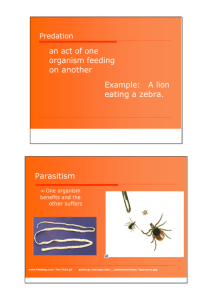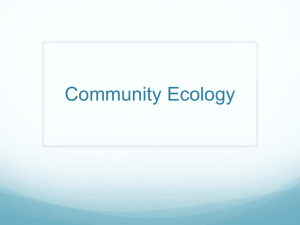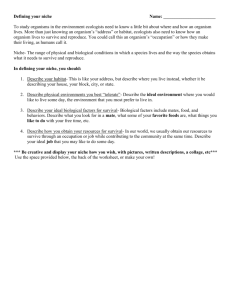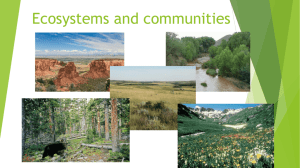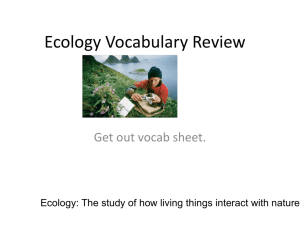Ecology 1_3 Symbiosis
advertisement
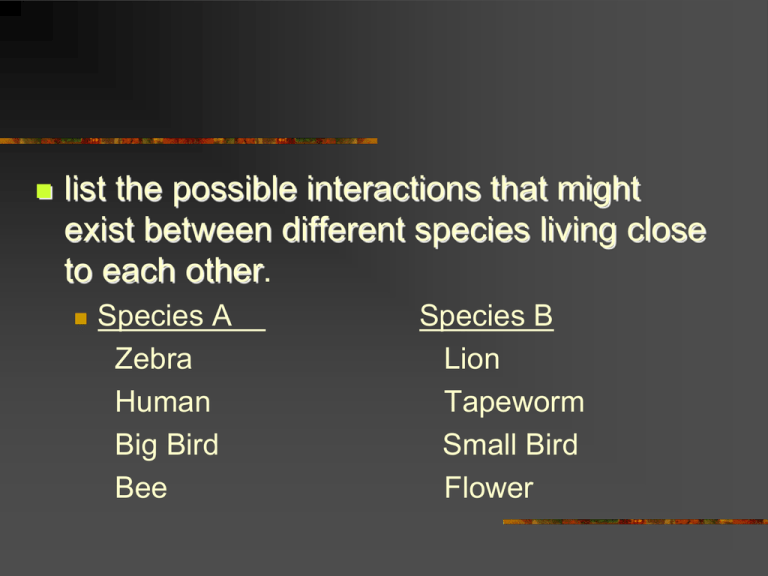
list the possible interactions that might exist between different species living close to each other. Species A Zebra Human Big Bird Bee Species B Lion Tapeworm Small Bird Flower Three people check into a hotel. They pay £30 to the manager and go to their room. The manager suddenly remembers that the room rate is £25 and gives £5 to the bellboy to return to the people. On the way to the room the bellboy reasons that £5 would be difficult to share among three people so he pockets £2 and gives £1 to each person. Now each person paid £10 and got back £1. So they paid £9 each, totalling £27. The bellboy has £2, totalling £29. Where is the missing £1? Habitat Habitat - Area Where Organism Lives (Address) Biotic and Abiotic Factors included A pond: Niche A species’ job or role in a community is called its niche. These jobs are vital to the survival of a community. Some niches are basic. Earthworms improve soil for plants and creatures. Earthworms look for food in the soil. They loosen the soil. This allows water and air to pass through. Some niches are complex. Niche of the Squirrel Squirrel nests in a tree trunk. Scrambling through branches, the squirrel breaks off twigs. This pruning helps the tree grow. The squirrel robs bird eggs. The squirrel is food for owls and hawks. Some of the nuts that the squirrel buries grow into trees, enlarging forest. The waste droppings from the squirrel enrich plant growth by fertilizing the ground. What’s Your Niche? Describe your “niche” in your family. Do you have the same “niche as anyone in your family? Competitive Exclusion Principle No two species can possess the same niche in the same habitat. Symbiosis Ecology Symbiosis Symbiosis is a close relationship between two organisms. One organism lives near the other One organism lives on the other One organism lives inside the other At least one organism benefits. 3 Types of Symbiosis Commensalism Mutualism Parasitism Commensalism Little birds gain protection from big birds. One benefits and the other is not harmed. Mutualism Both organisms benefit. Neither organism is harmed. Parasitism One organism benefits. The other is harmed. Video Clips Make a prediction for each interaction. While the video is showing think about the real relationship. We will discuss actual relationship after the video.

